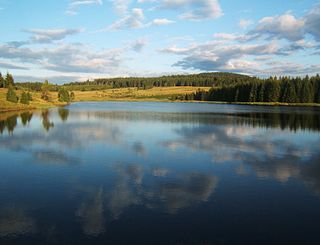History
The first record of the hammer mill dates to the year 1607, when the owner of the demesne in Freibergsdorf, Ernst Schönlebe, was granted water for his (iron) bar mill or Zainhammer. On several occasions, the water of the Goldbach was the subject of dispute between the Freiberg Mine, the hammer mill and a neighbouring mill. Over the course of the centuries, the hammer works primarily manufactured iron products both for the mining industry (e. g. tools like hammers, chisels, crow bars) as well as implements for agricultural use. Until its sale to St. John's Hospital in 1903, the hammer mill had been privately owned. Between 1903 and 1945 it made copper products almost exclusively. Commercial operations were finally ended in 1974.

In the feudal system, the demesne was all the land which was retained by a lord of the manor for his own use and occupation or support, under his own management, as distinguished from land sub-enfeoffed by him to others as sub-tenants. In England, royal demesne is the land held by the Crown, and ancient demesne is the legal term for the land held by the king at the time of the Domesday Book.
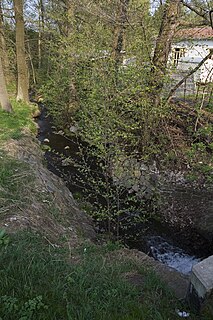
The Goldbach is a river of Saxony, Germany. It is a left tributary of the Münzbach, which it joins in Freiberg.
In German-speaking countries, the miner's toolset is known as a Gezähe formerly also abbreviated to Gezäh. It is a set of personally-owned mining tools and equipment needed by the miner in his daily work.
Between 1979 and 1989 the Freibergsdorf Hammer Mill was reconstructed. For example, safety measures to the roof timbers, the water wheels, hammer axle and structure, the rubble stone walls and water chests were carried out. The hammer mill was opened to the public in 1991, but may only be visited by appointment or as part of events such as the German Mill Day (Deutscher Mühlentag) or the Day of Traditional Crafts (Tag des traditionellen Handwerks). It is looked after by the Freibergsdorf Hammer Mill Society (Freibergsdorfer Hammerverein e. V.).

Freiberg is a university and mining town in the Free State of Saxony, Germany. It is a so-called Große Kreisstadt and the administrative centre of Mittelsachsen district.
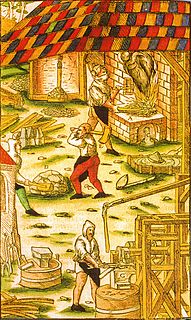
A hammer mill, hammer forge or hammer works was a workshop in the pre-industrial era that was typically used to manufacture semi-finished, wrought iron products or, sometimes, finished agricultural or mining tools, or military weapons. The feature that gave its name to these workshops was the water-driven trip hammer, or set of hammers, used in the process. The shaft, or 'helve', of the hammer was pivoted in the middle and the hammer head was lifted by the action of cams set on a rotating camshaft that periodically depressed the end of the shaft. As it rose and fell, the head of the hammer described an arc. The face of the hammer was made of iron for durability.

A stamp mill is a type of mill machine that crushes material by pounding rather than grinding, either for further processing or for extraction of metallic ores. Breaking material down is a type of unit operation.

The 140-kilometre-long road, the Silver Road is the first and longest holiday route in the German Free State of Saxony. Against the background of the importance of mining in the history of Saxony, the road links those sights and tourist attractions of the Ore Mountains and its foreland that relate to the centuries-old mining and smelting industries of the region.
Mittelsachsen is a district (Kreis) in the Free State of Saxony, Germany.

The Upper Harz Water Regale is a system of dams, reservoirs, ditches and other structures, much of which was built from the 16th to 19th centuries to divert and store the water that drove the water wheels of the mines in the Upper Harz region of Germany. The term regale, here, refers to the granting of royal privileges or rights in this case to permit the use of water for mining operations in the Harz mountains of Germany.

Mining in the Upper Harz region of central Germany was a major industry for several centuries, especially for the production of silver, lead, copper, and, latterly, zinc as well. Great wealth was accumulated from the mining of silver from the 16th to the 19th centuries, as well as from important technical inventions. The centre of the mining industry was the group of seven Upper Harz mining towns of Clausthal, Zellerfeld, Sankt Andreasberg, Wildemann, Grund, Lautenthal und Altenau.
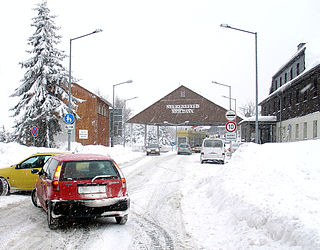
The Old Freiburg to Teplitz Post Road is one of the passes over the Ore Mountains and was a major transport link from the mining town of Freiberg (Saxony) over the crest of the Eastern Ore Mountains to the North Bohemian spa resort of Teplitz, now Teplice.

The Ore Mountain passes are crossings and passages over the crest of the Ore Mountains in Central Europe, over which tracks, roads, railway lines and pipelines run from the Free State of Saxony in the Federal Republic of Germany to Bohemia in the Czech Republic and vice versa.

Eisenhammer Dorfchemnitz is an historic hammer mill in Dorfchemnitz in the Ore Mountains of Germany. The mill is an important witness to proto-industrial development in the Ore Mountains. Of the once-numerous hammer mills only three others remain working in Saxony apart from the Frohnauer Hammer: the Frohnauer Hammer Mill, the Grünthal Copper Hammer Mill and the Freibergsdorf Hammer Mill.

St. Anne's Church in Annaberg-Buchholz, German Free State of Saxony, is a hall church whose architectural style is on the boundary between the Late Gothic and Renaissance. With a length of 65 metres and width of 40 metres, it is the largest, true hall church of the Late Gothic in Saxony. Its tower is 78 metres high, the interior of the church 28 metres high. It is the emblem of the town and visible from a long way off. Saint Anne's was originally built in 1499 as a Roman Catholic church, but became Evangelical-Lutheran in 1539.
The Revierwasserlaufanstalt Freiberg or RWA Freiberg, was a historical water management system that delivered driving water to the Freiberg mines in the time of the German Electorate and later Kingdom of Saxony. Today the system is used to supply drinking and industrial water and is operated by the Saxony State Reservoir Office.

The Ore Mountain Mining Region is an industrial heritage landscape, over 800 years old, in the border region between the German state of Saxony and North Bohemia in the Czech Republic. It is characterised by a plethora of historic, largely original, monuments to technology, as well as numerous individual monuments and collections related to the historic mining industry of the region. The identity and authenticity of the mining heritage landscape of the Ore Mountains on both sides of the German-Czech border has no equivalent anywhere in the world, and if the region succeeds in being recognised as a UNESCO world heritage site - for which it has been nominated - it should help to preserve it for future generations as a "developing cultural landscape".

The Freiberg Mining Field is an ore field which, in its widest sense, is located on an ore deposit of precious and non-ferrous metals roughly 35 x 40 kilometres in area in the lower Eastern Ore Mountains in the German Free State of Saxony. The mining region is centred on Freiberg, but extends beyond that town's borough into the municipalities of Halsbrücke, Hilbersdorf, Bobritzsch, Weißenborn, Oberschöna and the boroughs of Brand-Erbisdorf and Großschirma. Mining has been carried out here since the last third of the 12th century. In a narrower sense the name refers to the area covered by the Freiburg and Halsbrück mining territories. The Brand Mining Field immediately to the south comprises just the one mining territory, the Brander Grubenfeld.
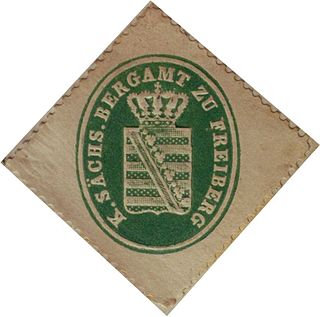
The Saxon Mining Office is the executive authority for mining rights in the German state of Saxony. It is also responsible for all non-metallic mineral resources on the terrain of the former East Germany.

The Graben Tour is a mining history footpath in the north of the former district of Freiberg in the German Free State of Saxony. It follows the course of an old mining water channel, in the valley of the Bobritzsch, from Krummenhennersdorf to Reinsberg.
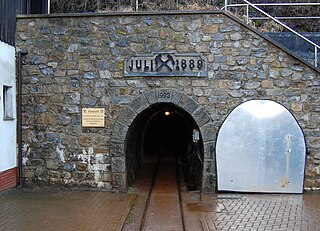
Drei Kronen & Ehrt is a former mine in the Harz Mountains of central Germany. It is located in the parish of Elbingerode in the county of Harz (Saxony-Anhalt). The mine extracted pyrite. Since 1992 it has been used, albeit not continuously, as a visitor mine.

Muldenhammer is a former subdivision of the town of Eibenstock in the Ore Mountains. It originated from an iron hammer forge, first mentioned in the 16th century and was abandoned in 1974 due to the construction of Eibenstock Dam.

The Erla Ironworks has its origins in one of the oldest hammer mills in the Upper Ore Mountains, which was first recorded in 1380 as the Hammer in der Erl, making the ironworks the oldest existing business in the German state of Saxony.




